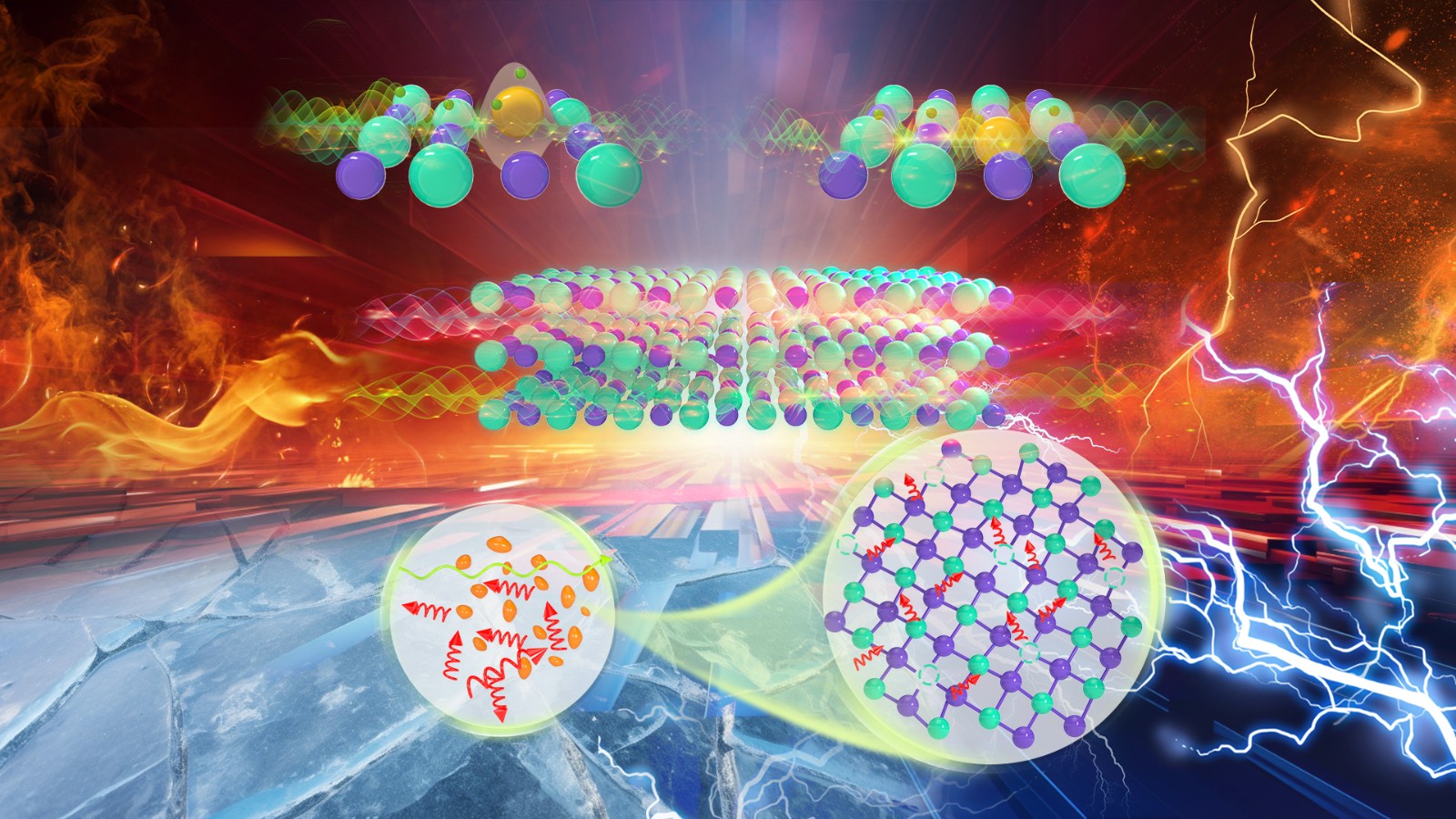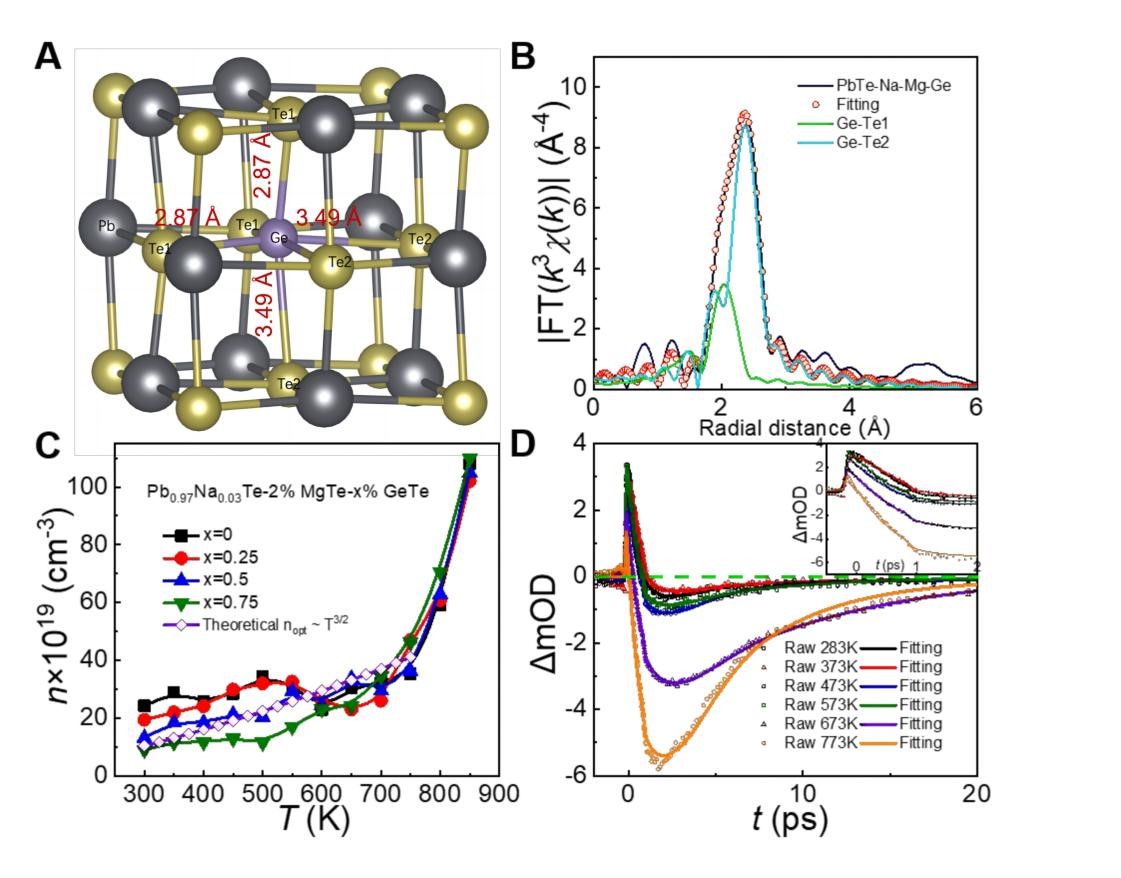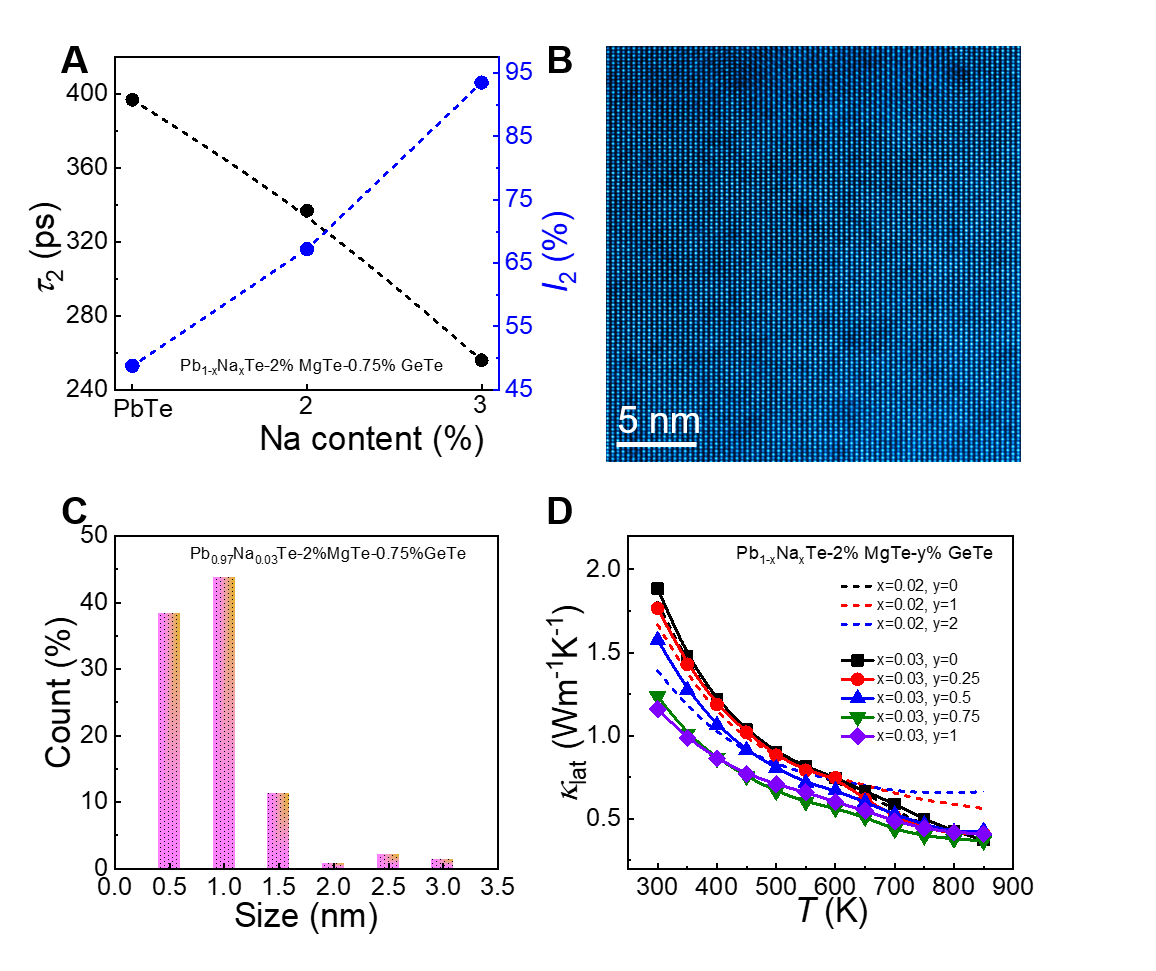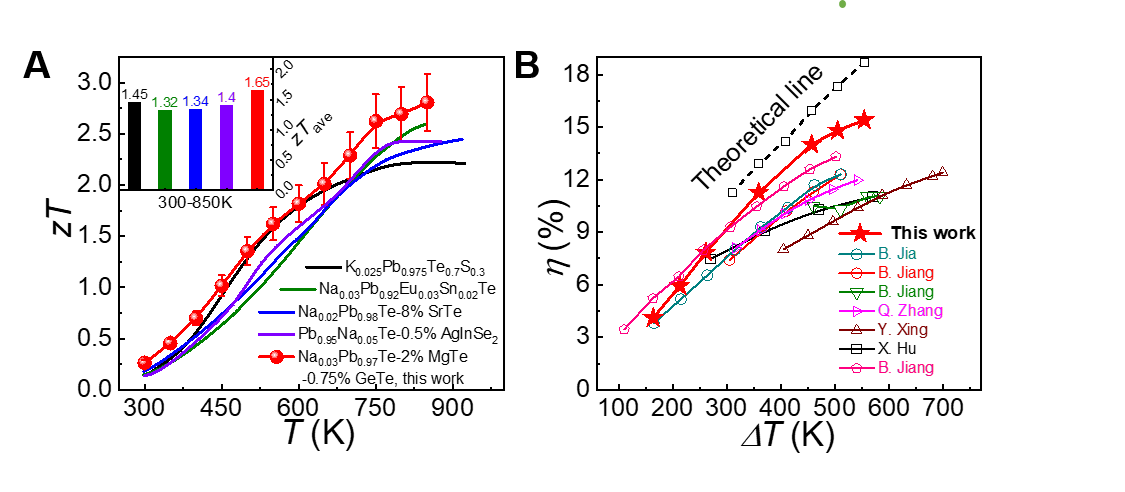Researchers obtain high-performance thermoelectric materials through trapped-hole release and pseudo-nanostructure
2024-04-05
Thermoelectric material is a kind of functional material capable of directly converting thermal into electrical energy and vice versa. The thermoelectric devices produced from materials have the potential to collect and utilize low-grade waste heat that is discretely distributed, offering broad applications. The performance of thermoelectric material is measured by the dimensionless figure of merit, zT = S2σT/κ, where materials with superior performance require high electrical conductivity (σ), high Seebeck coefficient (S), and low thermal conductivity (κ). However, since these thermoelectric parameters are closely coupled through carrier concentration, enhancing one parameter often leads to a decrease in another. Therefore, the decoupling control of thermoelectric parameters has always been a research challenge in the field of thermoelectric materials.
When the thermoelectric devices operate under temperature gradients, various regions of the thermoelectric material are subjected to distinct temperature ranges. Therefore, to achieve enhanced thermoelectric conversion efficiency, it is often necessary to elevate the average zT value of the material within the operational temperature range. Due to variations in temperature and band structure, the optimal carrier concentration of the thermoelectric material varies across different temperatures. The optimal carrier concentration n*, follows a T3/2 relationship with temperature, indicating that the material should exhibit low carrier concentration at low temperatures and high carrier concentration at high temperatures, i.e., dynamic modulation of carrier concentration is required. Moreover, thermoelectric materials often need to operate continuously at high temperatures for decades or longer during application, which places higher demands on their high-temperature stability.

Chair Professor Jiaqing He’s research group from the Department of Physics at the Southern University of Science and Technology (SUSTech) has made a groundbreaking advancement in the field of thermoelectric materials and modules at medium temperature.
Their related findings, entitled “Pseudo-nanostructure and trapped-hole release induce high thermoelectric performance in PbTe,” have been published in the top-tier international academic journal Science.
In this work, based on the doped PbTe material with Na and Mg to regulate the carrier concentration and band structure, the group further designed the Ge element doping. Due to the stronger bond energy between Ge and Te, the Ge replaced Pb and formed different bond lengths with neighbouring Te atoms, leading to the displacement of Ge atoms from the lattice center and forming an off-centered structure. This off-centered structure results in variations in the distribution of electron clouds around the Ge atoms, thereby creating a hole-trapping state. This structure can capture hole carriers at low temperatures to reduce the carrier concentration. At high temperatures, the off-centered Ge atoms return to the center, and the trapped holes are released. This method achieves dynamic regulation of hole concentration across the entire temperature range by introducing lattice distortion, without affecting the high-temperature carrier concentration.

Figure 1. The off-centered Ge atoms (A and B), the temperature-dependent carrier concentration (C) and carrier release (D)
In addition to the optimization of electrical properties, reducing the lattice thermal conductivity is also a key focus of research. Lattice thermal conductivity refers to the heat conducted through the crystal lattice, which is primarily influenced by the crystal structure and defects within the material. Complex crystal structures and all-scale hierarchical defects can effectively scatter phonons, leading to a reduction in lattice thermal conductivity.
Unlike traditional strategies that construct nanostructures by inducing second phases, this work dexterously addresses the issue from the intrinsic Pb vacancies in the material. By doping Na and Ge, the concentration and morphology of Pb vacancies in the material are modified, resulting in a large number of Pb vacancies that agglomerate into vacancy clusters on a nanoscale, known as pseudo-nanostructure. These widely distributed vacancy clusters induce larger stress and strain in the crystal lattice than single-atom vacancies, thereby significantly enhancing phonon scattering and reducing thermal conductivity. This strategy starts with the regulation of intrinsic point defects, adjusting their concentration and morphology to achieve the same goal of reducing the material’s lattice thermal conductivity as constructing the second phase. Moreover, these pseudo-nanostructures have a high compatibility with the matrix crystal lattice, which is beneficial for the stability of materials during high-temperature service.

Figure 2. The increase in the concentration of Pb vacancies (I2) leads to a decrease in the size of vacancy clusters (τ2) (A), high-density nanoscale Pb vacancy clusters (B), the distribution of vacancy cluster size (C), the lattice thermal conductivity of the materials (D)
Owing to the trap and release of carriers, which maintain the high electrical performance, combined with the effectively reduced lattice thermal conductivity originating from the pseudo-nanostructure, the thermoelectric figure-of-merit of PbTe-based thermoelectric materials has been significantly enhanced, with the peak zT value reaching 2.8 and the average zT value reaching 1.65 (from 300-850K). The thermoelectric modules prepared from this material, after optimizing the structure through dimensional design, achieved a conversion efficiency of 15.5%.
This work provides insights into the optimization of thermoelectric material performance from both material structure and module structure design perspectives.

Figure 3. The zT values (A) and conversion efficiency (B)
Postdoctoral fellow Baohai Jia from Jiaqing He’s group, Professor Di Wu from Shaanxi Normal University, and Associate Professor Lin Xie from SUSTech (currently an Associate Professor at the Great Bay University) are the co-first authors of the paper. Chair Professor Jiaqing He is the sole corresponding author, and co-authors include Professor Zhiquan Chen from Wuhan University, Researcher Yuxiang Weng from the Institute of Physics, Chinese Academy of Sciences in Beijing, and Professor Binbin Jiang from the University of Electronic Science and Technology of China. SUSTech is the primary affiliated unit of the paper.
This research was supported by the National Natural Science Foundation of China (NSFC), Shenzhen Science and Technology Innovation Commission, Outstanding Talents Training Fund in Shenzhen, and the Strategic Priority Research Program of Chinese Academy of Science.
Paper link: http://dx.doi.org/10.1126/science.adj8175




